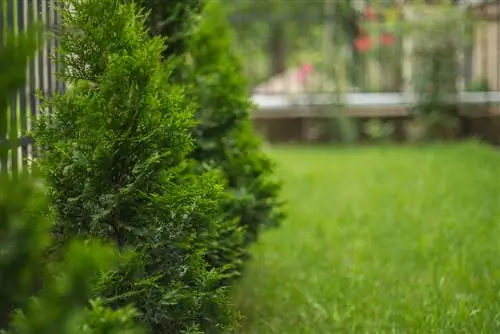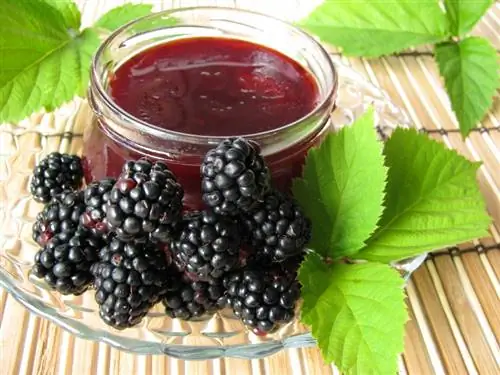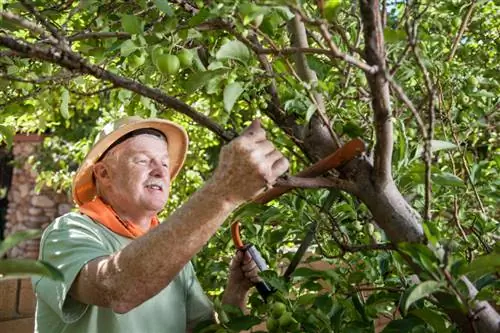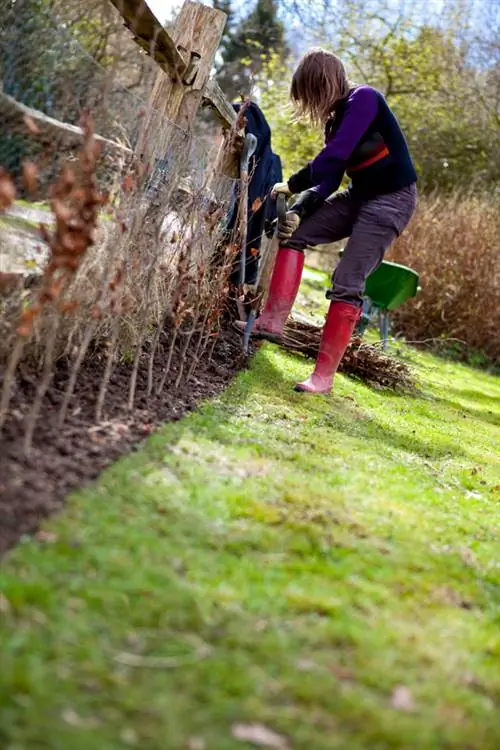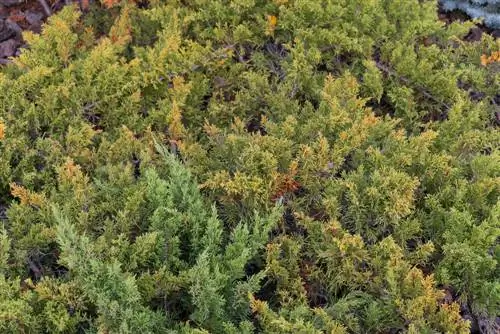- Author admin [email protected].
- Public 2023-12-16 16:46.
- Last modified 2025-06-01 06:02.
Thuja Smaragd is a relatively undemanding tree of life that is maintained as a hedge or, even better, as a solitary plant in the garden. Although it needs sufficient nutrients, over-fertilization must be avoided at all costs. This is how you fertilize Thuja Smaragd correctly.
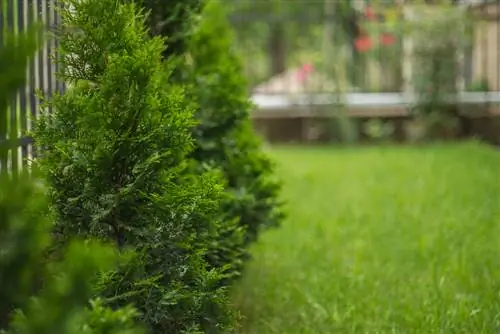
How should you properly fertilize Thuja Smaragd?
It is best to fertilize Thuja Smaragd in spring with organic fertilizers such as conifer fertilizer, compost or horn shavings. Avoid overfertilization and only use Epsom s alt if there is a proven magnesium deficiency. A layer of mulch can release additional nutrients and keep the soil moist.
Fertilize Thuja Smaragd - be careful of over-fertilization
When fertilizing Thuja Smaragd, you can quickly do too much of a good thing. This is especially true if you rely on mineral fertilizers. These fertilizers quickly lead to over-fertilization.
It is better to use organic fertilizers.
Immediately after planting the Thuja Smaragd, you only need to fertilize if you have planted bare-root Thujas. Baled goods are sufficiently supplied with nutrients for the first year.
Suitable fertilizers for Thuja Smaragd
The following are suitable as fertilizers for the tree of life:
- Conifer fertilizer
- Compost
- Horn shavings
- deposited manure
- Bluegrain
- Epsom s alt (magnesium deficiency)
- Limescale (manganese deficiency)
The best time to fertilize
The first fertilization of Thuja Smaragd takes place in spring. When using slow-release fertilizers, a single dose is sufficient.
You can fertilize again until the end of July with short-term fertilizers such as blue grain. Fertilizing no longer makes sense later in the year, as the new growth stimulated by the nutrients will no longer harden before winter.
If compost or horn shavings are used as fertilizer, over-fertilization is not possible. These materials release nutrients slowly.
Be careful when using mineral fertilizers
When fertilizing with mineral fertilizers, you must carefully follow the instructions on the packaging. Thuja Smaragd as a single tree needs less fertilizer than if you care for the tree of life in the hedge.
Avoid the mineral fertilizer coming into direct contact with the needles, trunk or roots, otherwise burns will occur. The affected shoots then turn brown and curl.
When does fertilizing with Epsom s alt make sense?
Regular fertilizing with Epsom s alt is often recommended. However, this fertilizer only makes sense if the Thuja Smaragd suffers from a magnesium deficiency. It manifests itself through bright yellow needles.
Before administering Epsom s alt, have the soil examined in a laboratory. This way you can be sure that the discoloration of the needles was actually caused by a magnesium deficiency and not by fungal diseases or pests.
Fertilizing with a layer of mulch
It has proven to be particularly useful to protect Thuja Smaragd in the hedge or as a solitary plant with a layer of mulch.
The mulching material releases nutrients as it decomposes and at the same time ensures a sufficiently moist soil climate.
Tip
If the needles of the Thuja Smaragd turn black, a lack of manganese is responsible. It occurs in compacted soils that are too moist. By adding lime, the substrate can be improved so that the tree of life can better absorb the manganese from the soil.

